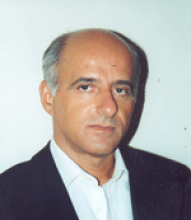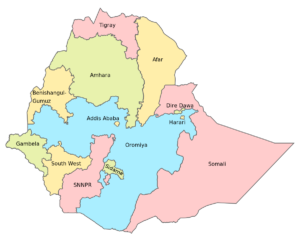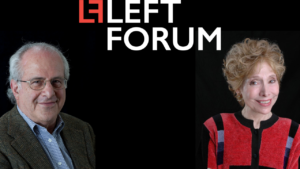Neocolonial Debt Traps Are Forcing Poorer Countries To Rely On Fossil Fuels

Tess Woolfenden – Photo: Debt Justice
To break our global dependence on fossil fuels, we must take on neocolonial debt, researcher Tess Woolfenden says.
In the current age of climate emergency, many countries in debt are being forced by Global North elites and institutions to continue to rely on fossil fuels in order to repay loans taken from rich countries. This neocolonial debt trap creates a vicious cycle because — as a new analysis from the organization Debt Justice shows — revenues from fossil fuels are not enough to repay debts and instead leave countries even deeper in debt while at the same time worsening the prospects of achieving the goal of zero global emissions by 2050.
This debt trap is one of many ways in which colonialism continues to shape the current era. While dozens of countries gained independence through successful decolonization struggles after World War II, colonialism persists through the use of economic and political pressures to control “dependencies” as a means of reinforcing global capitalism.
In the exclusive interview for Truthout that follows, Tess Woolfenden, senior policy and research officer at Debt Justice and the author of the aforementioned report, discusses the dynamics between debt and fossil fuels, highlights the consequences of fossil fuel colonialism and offers concrete policy solutions for breaking the cycle.
C. J. Polychroniou: Tess, it’s a well established scientific fact that greenhouse gases like carbon dioxide (CO2) cause global warming. The burning of fossil fuels — coal, oil and gas — accounts for over 75 percent of greenhouse gas emissions and 90 percent of carbon dioxide emissions, making them the largest contributor to global climate change. Yet, fossil fuels still account for more than 80 percent of global energy production and the energy transition proceeds very slowly. In fact, it is projected that by 2023, “fossil fuels will still account for 78 percent of the global energy mix.” Why is it so hard to phase out fossil fuels?
Tess Woolfenden: Very simply, the people with the power to phase out fossil fuels — governments, corporations and institutions — do not want to. The fossil lobby is powerful, and with huge profits to be made ($52 trillion since 1970 reportedly), it is in their interests for the world to keep burning fossil fuels despite the devastating consequences.
For years, climate justice activists have fought to get the powerful global north governments, institutions, corporations and billionaires overwhelmingly responsible for creating the climate crisis to transition to clean, renewable energy. But despite making various commitments over the years, phasing out fossil fuels is still not happening. For example, at COP26 governments committed to phasing out fossil fuel subsidies, yet just last week research by the International Institute for Sustainable Development showed that the world’s richest governments put a record $1.4 trillion into subsidising oil, coal and gas in 2022. Rich governments clearly do not see these commitments as binding.
In the case of many Global South countries, we also must consider their long-standing dependency on fossil fuels. For decades, Global South governments have been reliant on their natural resources, including fossil fuels, to keep their economies going and to repay high debt burdens. This dates back to colonialism where, under European rule, countries’ economies were transformed to focus on the export of raw materials such as oil and coal, to feed industrial growth taking place in Europe. The ongoing extraction of resources and inequalities in the global trade, tax and financial systems have meant that Global Aouth countries have not been able to diversify their economies, and remain reliant on commodity exporting even today — many refer to this as the “commodity dependency trap.” What’s more, Global North governments and Global North-dominated institutions like the International Monetary Fund (IMF) and World Bank have extended this trap by encouraging and enforcing Global South reliance on commodity exporting, through, for example, conditions attached to loans. This has kept countries poor and reliant on loans; it has also guaranteed cheap access to Global South countries’ natural resources. So, for many Global South countries, phasing out fossil fuels also requires us to dismantle deep long-standing inequalities etched into our global systems.
Debt Justice, a U.K.-based organization, has just released a report, titled “The Debt-Fossil Fuel Trap,” which you actually wrote, on the links between debt and fossil fuel production in Global South countries. But before we get into those links, what do you make of the argument that Global South countries should be allowed to continue relying on the burning of fossil fuels for development purposes while the Global North countries reduce their carbon footprint?
I understand this argument. It comes from a place of recognizing that the Global North has used up more than its fair share of atmospheric space and has been able to develop and profit in the process, while Global South countries bear the worst impacts of the climate crisis. Why should countries in the Global South now not be able to do the same?
But as many groups in the Global South highlight, to do so would lead us further down the path of climate catastrophe. It would also maintain Global South countries’ reliance on fossil fuels, extending commodity dependency and the economic injustices and challenges this presents.
Instead, in the global debt movement we call on rich, polluting governments, institutions and corporations to pay their “climate debt” — the debt they owe for the destruction of the climate crisis they caused — and to provide reparations. These are broad, expansive demands that would allow Global South countries to put an end to their reliance on fossil fuels and have the resources they need to transition to clean, renewable energy.
The analysis behind “The Debt-Fossil Fuel Trap” suggests that the developed countries and major global institutions like the IMF and the World Bank have trapped many Global South countries into dependence on fossil fuels as a way of repaying their debt. First, can you talk a bit about the external public debt dynamics that the world’s poorest countries have to deal with and how the climate crisis and further dependence on fossil fuel projects is driving them even further into debt distress?
An important starting point is to understand that debt in Global South countries is not an accident or necessity — Global South indebtedness has been engineered by Global North elites to pilfer wealth and maintain their position of power in a postcolonial setting.
Many Global South governments started their journey of independence in an economically weak position after centuries of colonial rule and had no choice but to borrow. Former colonial powers were happy to lend — not because they were generous or invested in the development of Global South countries, but because it benefited them, politically and economically. Global South governments have spent trillions on interest payments to wealthy Global North lenders since 1970, while at the same time, governments and institutions like the IMF and World Bank have used their power as lenders to control and shape global south government policies, including forcing decades of austerity onto Global South countries and communities with devastating consequences. Many lenders, but especially the private sector, have seen Global South countries’ need to borrow as a huge opportunity for profit, charging extortionate interest rates on their loans supposedly to cover the risk of lending. The result is recurring debt crises.
Thanks to these dynamics, and the economic impacts of the 2008 financial crisis, COVID-19 and the Ukraine war (none of which the Global South bears responsibility for), Global South countries are once again in debt crisis. Fifty-four countries are in crisis, while many others are struggling with high debt burdens. This means the resources that countries could be spending on addressing the needs of people, from health and education to addressing the climate crisis, are instead being spent on debt repayments to wealthy creditors. Our analysis shows that lower income countries are spending five times more on debt repayments than addressing the climate crisis.
But it’s not just that debt is hampering climate action. The climate crisis is also making debt much worse, due to the refusal of Global North elites to adequately and justly respond to the climate crisis they created.
On the one hand, Global South countries are being forced to pay for the costs of the climate crisis themselves, pushing many into more debt as rich governments, institutions and corporations refuse to provide adequate, non-debt creating climate finance to Global South countries. In Pakistan for example, after devastating floods in 2010, the country had to borrow $20-40 billion more than would have otherwise been the case. On the other hand, we have the reality that Global South governments are trapped in fossil fuel exploitation which also exacerbates debt, despite Global North governments’ and institutions’ claims to the contrary. As I mentioned before, Global North governments and institutions like the IMF and the World Bank have long pushed commodity dependency in the Global South, including extracting and exporting fossil fuels, seeing this as a way for Global South countries to develop, grow and repay debt. Not only has this caused devastating human and environmental harm to Global South communities and land. But also, the financial benefits of such endeavours often do not materialise and can push Global South countries further into debt.
In Argentina for example, the government and IMF are pushing the development of fracking in the Vaca Muerta oil and gas field, in part to generate revenue to repay debt. Activists have been highlighting that, because of the huge investments needed for this project, it will likely exacerbate debt levels rather than reduce them. In Mozambique, government guarantees on liquified natural gas (LNG) projects could exacerbate the government’s already unsustainable debt burden, while the expected profits from LNG projects — which are yet to materialise — reportedly enabled the government to take out huge loans from the private sector which pushed the country into a debt crisis. In Ghana — a country already in debt crisis – contracts which force the government to buy gas and other fossil fuel supplies at a set price and volume which far exceeds the country’s needs have reportedly added $1.2 billion to the country’s debt burden.
The reality is that high debt burdens are severely hampering Global South countries’ ability to address the climate crisis. Meanwhile, the failure of Global North elites to adequately respond to the climate crisis is exacerbating the debt crisis — a crisis which is already in full swing and causing significant harm to Global South countries and communities. We have to break this cycle if we want to avoid total climate catastrophe.
With debt as a prime example, we can see that colonial legacies continue to shape the contemporary global political economy. And the same goes with fossil colonialism, which refers to the exploitation of fossil fuels in the Global South by companies and governments from the Global North. In fact, even the German and European Union green hydrogen projects in Africa follow colonial patters, according to critics. So, what solutions are there for the Global South countries, and can there be climate justice without debt justice?
As a starting point, we urgently need debt cancellation. But this is not happening currently, largely because of a lack of political will. There is a G20-led process in place to support countries seeking debt relief from their external bilateral and private creditors, but it has failed. Only four countries have applied, and only one finalised a deal with both its bilateral and private creditors — Chad. But this deal didn’t actually provide any debt relief and instead locked the country further into fossil fuel exploitation by including oil revenues as part of the country’s debt repayment deal to commodities trading company Glencore (a challenge Suriname is also facing with its private creditors).
Part of the reason this process is failing is because powerful creditors in the private sector — like BlackRock — have not been forced to participate in the process. While being one of the biggest investors in fossil fuels in the world, BlackRock is also one of Global South countries’ largest bondholders and could make huge profits from the debt it holds. For example, BlackRock could make profits of 110 percent if repaid in full by Zambia. We need to force these creditors to the table, and the best way to do this is legislation. Nearly all Global South external debt owed to the private sector is governed under English or New York law, so the U.K. and U.S. have a special responsibility to act and introduce new laws that would force private creditors to participate in debt relief.
But debt cancellation is only part of the story. As we have seen in the past with the mass debt cancellation that took place in the early 2000s, debt cancellation without wider reform that addresses the injustices and inequalities embedded in debt and financial systems will just see debt levels build up time and time again.
That’s why many of us in the debt movement are also demanding reparations — a broad set of demands that seek repair for the harms of injustice already experienced and realized over centuries, and that ensure those harms cannot happen again. From a debt perspective, this includes many elements, from regulating creditors and their predatory behaviour to ending Global South countries’ commodity dependency and reliance on borrowing to meet people’s needs. It also means recognizing that debt is one tool of injustice and exploitation among many and must be recognized as deeply connected to other struggles, including, of course, the climate crisis.
Copyright © Truthout. May not be reprinted without permission.

C.J. Polychroniou
C.J. Polychroniou is a political scientist/political economist, author, and journalist who has taught and worked in numerous universities and research centers in Europe and the United States. Currently, his main research interests are in U.S. politics and the political economy of the United States, European economic integration, globalization, climate change and environmental economics, and the deconstruction of neoliberalism’s politico-economic project. He is a regular contributor to Truthout as well as a member of Truthout’s Public Intellectual Project. He has published scores of books and over 1,000 articles which have appeared in a variety of journals, magazines, newspapers and popular news websites. Many of his publications have been translated into a multitude of different languages, including Arabic, Chinese, Croatian, Dutch, French, German, Greek, Italian, Japanese, Portuguese, Russian, Spanish and Turkish. His latest books are Optimism Over Despair: Noam Chomsky On Capitalism, Empire, and Social Change (2017); Climate Crisis and the Global Green New Deal: The Political Economy of Saving the Planet (with Noam Chomsky and Robert Pollin as primary authors, 2020); The Precipice: Neoliberalism, the Pandemic, and the Urgent Need for Radical Change (an anthology of interviews with Noam Chomsky, 2021); and Economics and the Left: Interviews with Progressive Economists (2021).
 The twentieth century saw the emergence of public funded universities and technical institutions, while technology development was concentrated in the R&D laboratories of large corporations. The age of the lone inventor—Edison, Siemens, Westinghouse, Graham Bell—had ended with the nineteenth century. The twentieth century was more about industry-based R&D laboratories, where corporations gathered together leading scientists and technologists to create the technologies of the future. In this phase, capital was still expanding production. Even though finance capital was already dominant over productive capital, the major capitalist countries still had a strong manufacturing base. In this phase of development, science was regarded as a public good and its development was largely concentrated in the university system or publicly funded research institutions. Technology development was largely regarded as a private enterprise. Science was supposed to produce new knowledge, which could then be mined by technology to produce artifacts. The role of innovation was to convert ideas into artifacts. The system of intellectual property—patents and other rights—arose to provide protection to the useful ideas embodied in artifacts. From the beginning, patents also had a public purpose—the state-granted monopoly for a certain period was meant to ensure the eventual public disclosure of the invention: the quid pro quo being full public disclosure in lieu of a limited-term monopoly.
The twentieth century saw the emergence of public funded universities and technical institutions, while technology development was concentrated in the R&D laboratories of large corporations. The age of the lone inventor—Edison, Siemens, Westinghouse, Graham Bell—had ended with the nineteenth century. The twentieth century was more about industry-based R&D laboratories, where corporations gathered together leading scientists and technologists to create the technologies of the future. In this phase, capital was still expanding production. Even though finance capital was already dominant over productive capital, the major capitalist countries still had a strong manufacturing base. In this phase of development, science was regarded as a public good and its development was largely concentrated in the university system or publicly funded research institutions. Technology development was largely regarded as a private enterprise. Science was supposed to produce new knowledge, which could then be mined by technology to produce artifacts. The role of innovation was to convert ideas into artifacts. The system of intellectual property—patents and other rights—arose to provide protection to the useful ideas embodied in artifacts. From the beginning, patents also had a public purpose—the state-granted monopoly for a certain period was meant to ensure the eventual public disclosure of the invention: the quid pro quo being full public disclosure in lieu of a limited-term monopoly.

